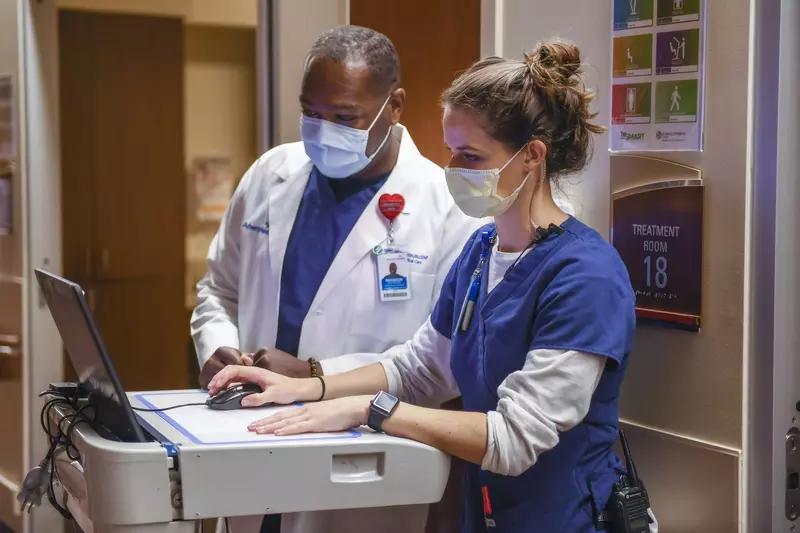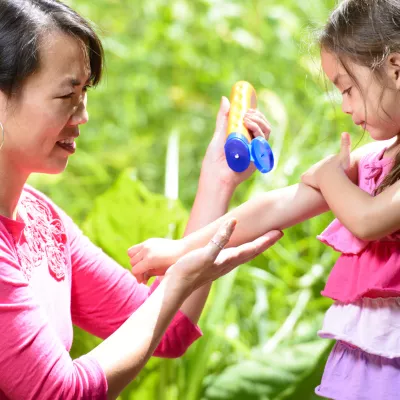- AdventHealth

On November 20, 2020, Pfizer, a national biopharmaceutical company, requested emergency use authorization (EUA) from the FDA for their coronavirus vaccine. Pfizer announced that their vaccine appears to be 95% effective against coronavirus, while a biotechnology company, Moderna, also recently shared that their vaccine is showing a high rate of effectiveness.
While this is great news, it’s important to understand that when a COVID-19 vaccine does become available and receives EUA, it won’t be available to everyone right away. Initially, the vaccine will be in short supply and distributed in phases, based on the level of need.
Coronavirus Vaccine Distribution Phases
The National Academies of Sciences, Engineering, and Medicine and the Centers for Disease Control and Prevention (CDC) created what they refer to as a “playbook” of guidelines for distributing the vaccine. This playbook will help ensure that there will be efficient, quick and reasonable distribution and administration of the coronavirus vaccine.
The CDC’s playbook guidelines recommend the following distribution plan:
Phase 1A: Health Care Personnel
The first group of people to receive the coronavirus vaccine would be people who serve in health care settings, such as hospitals, assisted living facilities, pharmacies and other settings, including those not directly involved in patient care.
Phase 1B: Essential Workers, Those With High-Risk Medical Conditions and Adults Over 65
Workers who are essential to continue critical businesses, such as food and agriculture, education and law enforcement, for example, would be included in this phase of vaccine distribution. People with high-risk medical conditions (including cancer, COPD and other illnesses) and adults aged 65 and older would also be included in this phase.
Phase 2: The Remainder of the Phase 1 Population and Critical Populations
This phase will offer the vaccine to anyone in the phase 1 population who wasn’t able to get access to the vaccine during the first phase. This second phase will also include critical populations, such as people at increased risk of acquiring or transmitting COVID-19, like college students, those living in shelters or people who are incarcerated.
Phase 3: People From Phases 1A, 1B and 2 Who Haven’t Gotten Vaccinated, Followed by Critical Populations and General Population
Though the CDC is creating guidelines for distribution, state and local officials will have the flexibility to administer the vaccine based on these people’s needs and the local demand.
Florida’s Coronavirus Vaccine Distribution Plan
With the CDC’s phases in mind, the Florida Department of Health has recently shared their vaccine distribution plan, broken out into four phases:
Phase 1A: Health workers and first responders
Phase 1B: People with high-risk health conditions and those in congregate settings
Phase 2: Workers in critical positions and people with underlying conditions
Phase 3: Workers in general settings, and children and young adults
Phase 4: Everyone who did not have access during previous phases
The federal government will handle the distribution and tracking of all coronavirus vaccines, once they are ready, and they will be ordered through the CDC.
Unfortunately, there is no hard timeline to know when every person will be able to get the COVID-19 vaccine. At this time, it’s likely that health care workers will begin to get vaccinated before the end of 2020, but the CDC shared that as supplies increase down the road, all adults should be able to get vaccinated later in 2021.
Staying Safe Until It’s Your Turn to Get Vaccinated
We know there’s a growing sense of urgency for things to get back to how they were pre-coronavirus, but we’re not there, yet. Cases are still rising in many parts of the world, and it’s not the time to start loosening your safety measures. Remember these methods of protection to keep you and your family safe:
• Avoid touching your eyes, mouth and nose
• Disinfect high-touch surfaces in your home frequently
• In public and at home, wash your hands thoroughly and often (use hand sanitizer if soap and water aren’t available)
• When you’re in public, always wear your face mask and stay 6 feet away from other people
If you’re sick, call or video visit with your doctor, stay home and avoid close contact with other people.
More Coronavirus News for You
We’re in this with you. Visit the Coronavirus Resource Hub for more news and updates as they become available.


